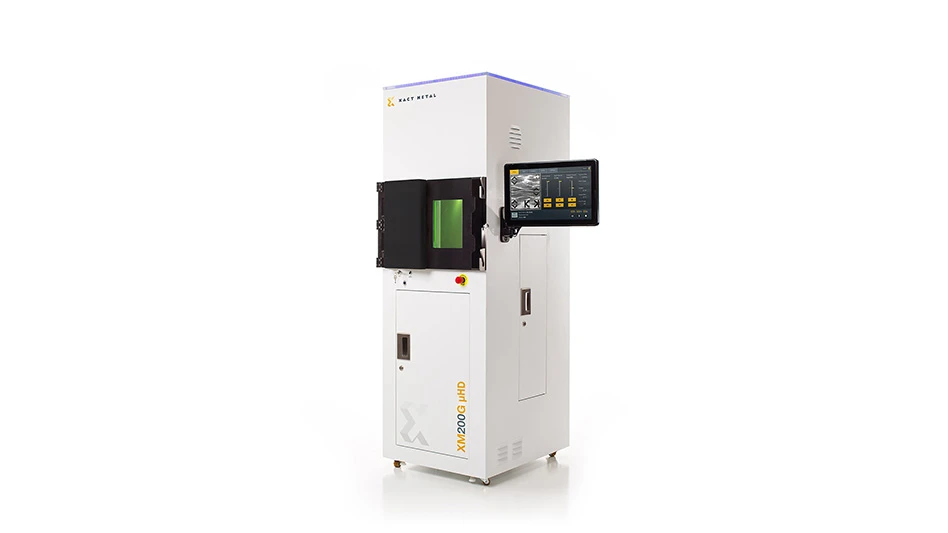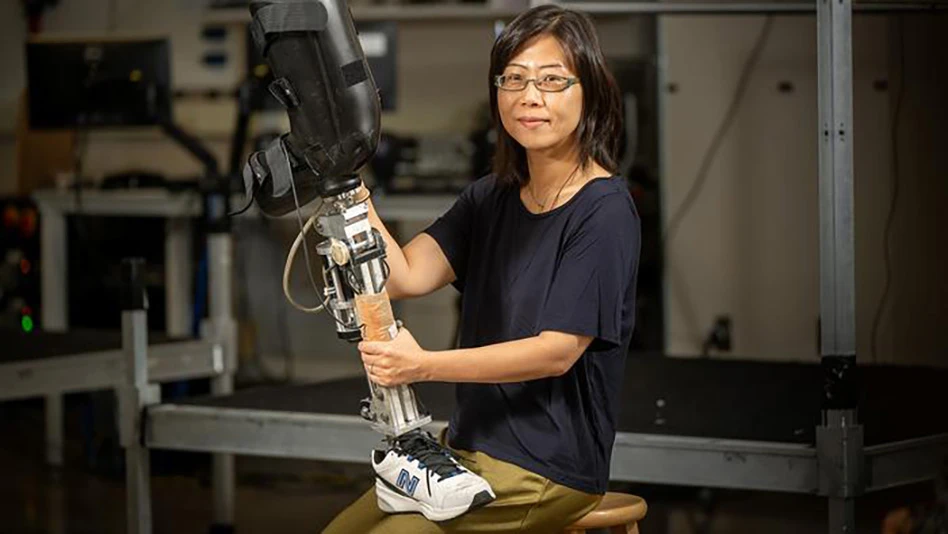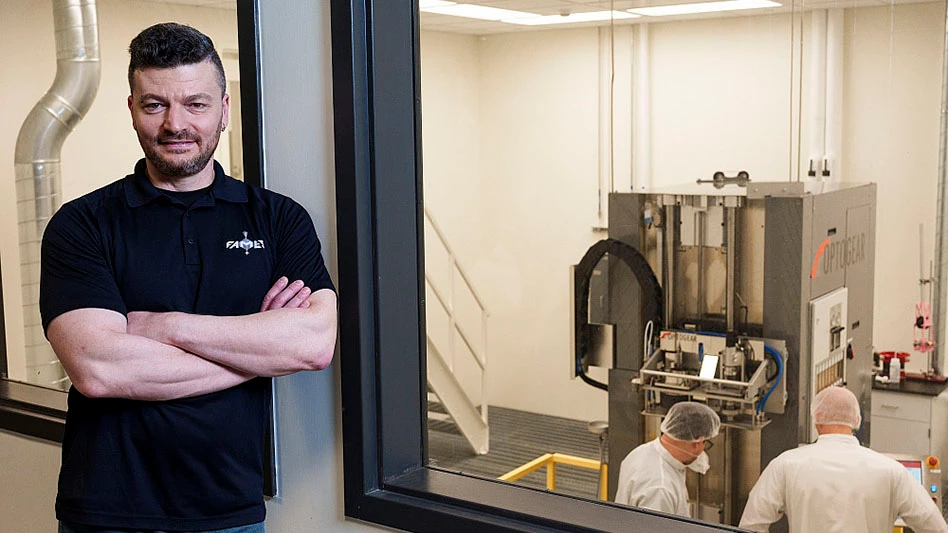 Trelleborg Sealing Solutions, with its experience in health care, contributes its sealing technology to the worldwide diabetes challenge. Trelleborg Sealing Solutions, with its experience in health care, contributes its sealing technology to the worldwide diabetes challenge. |
Dr. Robert Henry, president of Medicine and Science at the American Diabetes Association, sees a fast-approaching calamity. “What is most startling is the number of new cases of diabetes in the United States every year,” he says. “It is close to 2 million people, and the number is rising. The number of complications is increasing, too. The cost of it all runs to 175 billion dollars per year.”
The explosion in diabetes cases is not limited to the U.S. According to the World Health Organization (WHO), 346 million people around the globe have the disease, and diabetes-related deaths will double between 2005 and 2030. Dr. Gojka Roglic, a diabetes specialist at the WHO, says the spread of diabetes is unique among chronic non-communicable diseases. “Wherever it has been examined, there has been no reduction in the number of people getting the disease,” she says.
Experts ascribe the global increase to mass urbanization, increased obesity rates, and aging populations.
Dr. Henry points to alarming statistics, “In Canada, the United States, and Mexico, the total number of patients was 33 million in 2000. By 2030 there will be 67 million. Diabetes growth will especially occur in places like Asia and Australia, where the number will more than double between 2000 and 2030, from 82 million to 190 million plus.”
Dr. Roglic agrees. “Right now, we don’t know how far the increase can go,” she says. “In countries that have had a high prevalence of obesity, one-third of the population is getting diabetes – and at a relatively young age, which is the most productive time of life. Diabetes could cripple even well-developed and well-resourced countries.”
 Ultra clean seals are required for medical applications. Ultra clean seals are required for medical applications. |
What is diabetes? The U.S. National Institutes of Health defines it simply as “a chronic disease marked by high levels of sugar in the blood.” Insulin, a hormone secreted by the pancreas, controls blood sugar (glucose). In Type 1 diabetes, the body secretes little or no insulin, whereas in Type 2 diabetes – the far more common type – the body secretes insulin, though progressively less over time, and does not respond to insulin properly.
The exact cause of diabetes remains unknown. “There is a genetic component to both Type 1 and Type 2 diabetes,” Dr. Henry says. “In Type 1 diabetes, much is known about susceptibility to diabetes through altered immunity or the factors that define why the body produces antibodies that destroy the insulin-producing cells. In addition, there are environmental triggers that appear to initiate the onset of Type 1 diabetes, and various suspects have been put forward, such as a viral infection or certain foods, such as milk – or perhaps insulin itself. These questions remain unanswered.”
In Type 2 diabetes, genetic susceptibility is less well defined, although multiple genetic abnormalities have been found. However, no major single genetic culprit has been identified.
Rising obesity rates have magnified the problem dramatically, as obesity is present in more than half of Type 2 diabetes cases, and an additional 20% to 30% of patients are overweight. However, Dr. Henry stresses that millions of overweight people never get diabetes. “It is an overstatement to say that if people were not overweight, they would not get diabetes – many of them would, but probably later in their lives. Therefore, obesity is an important factor, although not a sufficient one, or even a necessary one. Instead, improper dietary habits and living a sedentary lifestyle are as important as obesity per se in this issue.”
A lack of physical activity can lead to insulin resistance in skeletal muscles. When this occurs, the body disposes of less glucose for a given amount of insulin. Dr. Henry maintains that right now there is not enough emphasis on promoting healthy lifestyles.
Proof has shown that lifestyle modification is the best way to prevent the onset of Type 2 diabetes. Programs in the United States, Scandinavia, and China have demonstrated that increased exercise, a low-calorie diet, and weight loss can prevent or postpone the onset of diabetes.
 O-Rings in specialized materials find common use in medical equipment. O-Rings in specialized materials find common use in medical equipment. |
Both experts agree that a complete cure for diabetes is probably not imminent. “Even if we have a breakthrough five years from now, it would take at least another 10 years to get it ready for widespread use,” Dr. Henry says. “But right now, I’m worried that in the current financial climate we’re being scrunched for money, and the science will suffer. Without research there will be no new discoveries.”
Nevertheless, Dr. Henry says management of the disease has come a long way. “We’ve made marvelous recent advances. There are many new medications, glucose sensors, monitors, and insulin pumps to help control blood glucose and reduce complications. For individuals with Type 1 diabetes, a truly functional artificial pancreas is within view. The future, though, is in prevention. And we have an opportunity to start making a difference now.”
Despite the success of treatment technology, substantial portions of the world do not have access to necessary equipment.
Dr. Roglic says, “Even insulin syringes aren’t available to everyone, so any cure that is found will be limited to those who can afford it. The current priority for the WHO is to help make existing technology available to everyone. Many are still dying from a lack of access.”
Technology Making Life Easier
As diabetes spreads, the demand for diabetes-related equipment to help manage the disease increases every year, as does the need for further innovation. Trelleborg Sealing Solutions, with its successful experience in health care, contributes its sealing technology to help make sufferers’ lives easier, including support for infusion sets and cartridge reservoirs for insulin pumps, septums for injection ports and vials, and injection ports for syringes and insulin pens.
Trelleborg Sealing Solutions
Fort Wayne, IN
trelleborg.com

Explore the June 2012 Issue
Check out more from this issue and find your next story to read.
Latest from Today's Medical Developments
- GrindingHub Americas launches in 2027 in Cincinnati, Ohio
- Methods Machine Tools now offers the Nakamura-Tome NT-Flex
- Battelle awards $900,000 in STEM education grants to Ohio schools
- #55 Lunch + Learn Podcast with KINEXON
- Starrett and Gerstner offer limited edition, American made 1950s replica wooden machinist tool chests
- EMCO’s UNIVERSALTURN 50: The new benchmark in universal turning
- Archetype's Expertise for Equity accelerates early-stage innovation
- Stratasys expands its AM solutions with Tritone's cutting-edge technology





